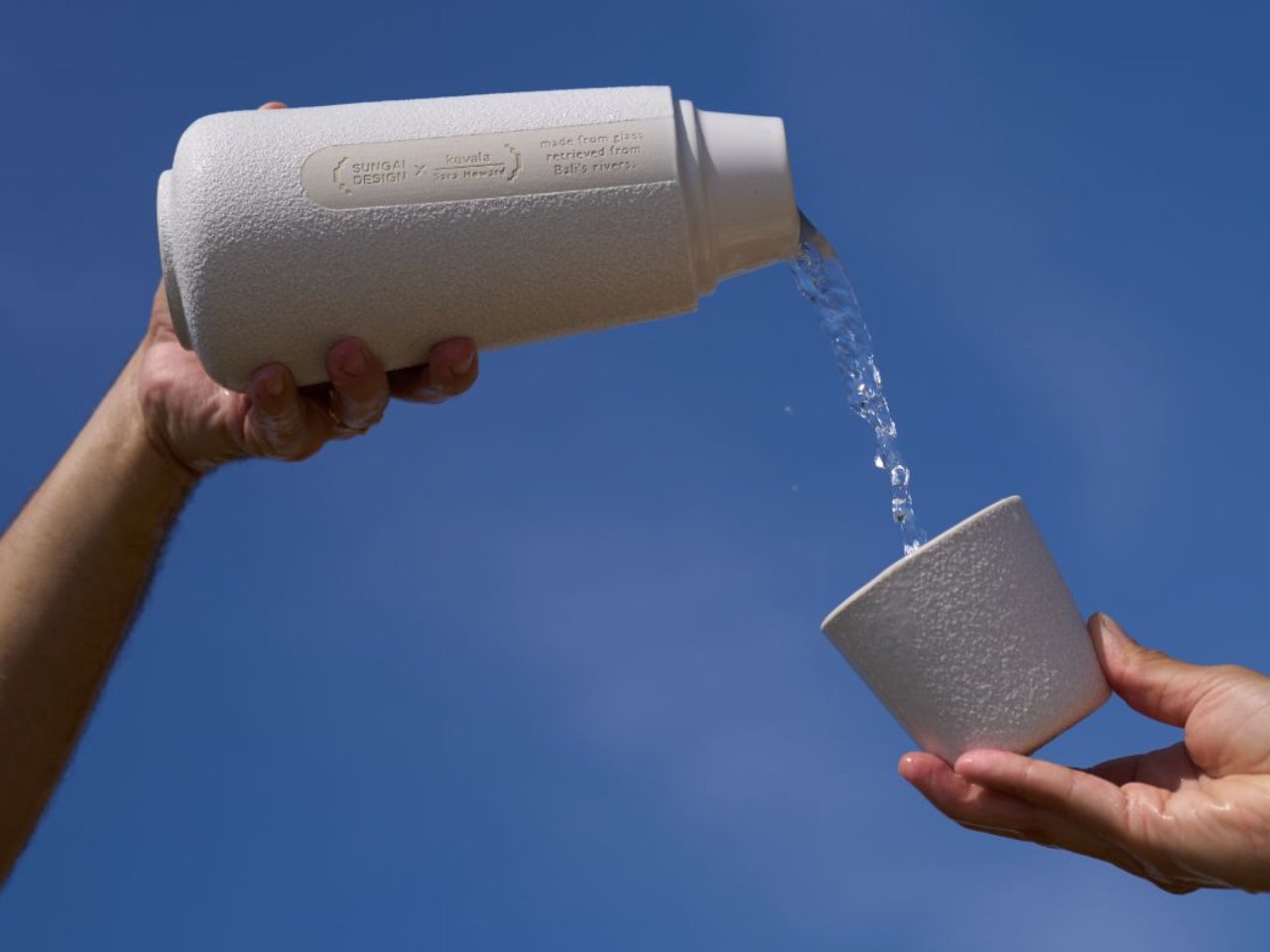Glass waste presents a persistent challenge across the globe, particularly in places like Bali, where recycling infrastructure can’t keep pace with consumption. Despite glass being infinitely recyclable without losing purity, much of it ends up in rivers and landfills, creating environmental problems that seem almost insurmountable through traditional approaches.
What makes the Sungai Carafe particularly compelling is how it transforms this waste stream into something beautiful and functional. Through a collaboration between material researcher Sara Howard, Kevala Ceramics, and river cleanup initiative Sungai Watch, discarded glass bottles retrieved from Bali’s rivers become elegant ceramic vessels that embody the philosophy of restoration and renewal.
Designers: Sara Howard, Kevala Ceramics
The material innovation process begins with the 155 river warriors at Sungai Watch, who collect roughly 26,300 kilograms of glass waste annually from Bali’s waterways. Sara Howard then crushes, refines, and transforms this glass into a new ceramic material, creating a direct supply chain that bypasses traditional mining and importation. Kevala Ceramics’ skilled artisans handcraft each carafe, bringing the innovative material to life through traditional techniques.
Of course, the design itself reflects the journey of transformation that defines the project. The carafe’s smooth, organic silhouette references the flow of water while its subtle translucency and unique surface texture showcase the character of the reclaimed material. Each piece feels distinctly one-of-a-kind, carrying the story of its origins while serving practical needs in homes and hospitality settings.
The ecological impact extends beyond simple waste diversion. By using glass that has reached its perceived end of life, the Sungai Carafe reduces reliance on imported raw materials and their associated carbon footprint. The transparent supply chain ensures ethical sourcing while supporting local economies and fostering community stewardship around environmental restoration.
That said, the social dimension proves equally important. The project creates meaningful partnerships between environmental activists, material researchers, and traditional craftspeople, demonstrating how cross-disciplinary collaboration can address complex challenges. You can trace the journey of each carafe from river cleanup to finished product, knowing exactly who extracted the material and how it was processed.
The Sungai Carafe operates on a philosophy of symbiotic design, where waste from one system becomes a resource for another. This approach challenges conventional supply chains that rely on extractive practices, instead building regenerative loops that benefit both communities and ecosystems. The result feels like more than just a beautiful object.
You’ll notice how the carafe embodies the concept of restoration at multiple levels, from cleaning polluted waterways to creating meaningful work for artisans. The project points toward a future where design, material science, and environmental activism converge to create products that tell stories of hope rather than extraction.
The Sungai Carafe offers a glimpse into how design can become truly regenerative when the right partnerships align. You might find yourself looking at discarded materials differently after learning about this project, recognizing potential where you once saw only waste. Sometimes the most meaningful innovations come from seeing connections that others have missed.
The post Sungai Carafe Turns Bali’s River Waste into Restorative Ceramics first appeared on Yanko Design.

